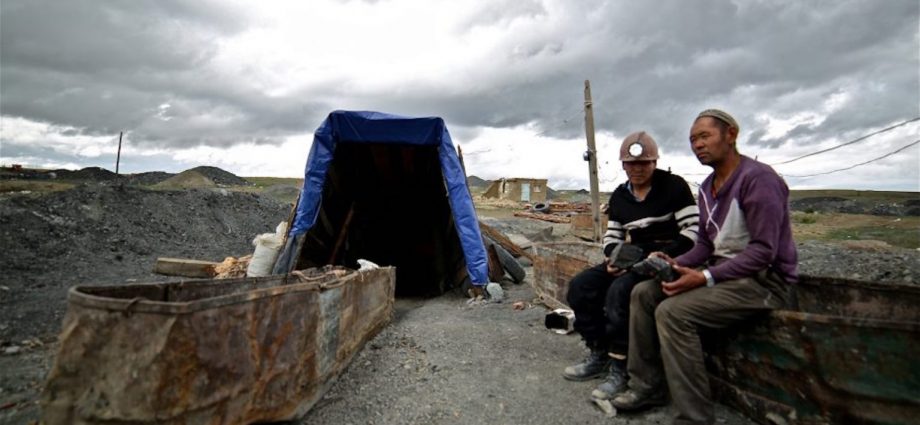Mongolia’s dependence on mining has intensified in recent decades. Following the discovery of major coal deposits and gold-copper ore in the early 2000s, mining’s economic significance surpassed that of the traditional livestock sector. In 2022, mining accounts for nearly a quarter of gross domestic product (GDP), up from a tenth in 2000.
Since the advent of large-scale mining in 2004, Mongolia’s economy has grown at an average rate of 7.2% per year, making it one of the world’s fastest-growing. Growth has translated to sustained poverty reduction and improvements in quality of life without a significant increase in income inequality.
Significant mineral revenues and a high level of external borrowing have provided support to a generous (but inefficient) social assistance system and a large public investment program.
Yet Mongolia’s rapid growth has been obscured by its extreme macroeconomic volatility and frequent boom-and-bust cycles. Growth has almost entirely come through capital accumulation and the intensive use of natural capital rather than sustained productivity growth. The elimination of extreme poverty owes more to the generous social transfer system than to the creation of abundant well-paying jobs.
Climate change and the Covid-19 pandemic are exacerbating these challenges.

Instead of using mineral wealth to reduce its dependence on the extractive sector, Mongolia has become addicted to it. Such complacency is ill-timed, especially as demand for key minerals is likely to tumble due to climate change concerns, a shift in investors’ preference toward sustainability, China’s ambitious goal to reduce coal consumption and the pandemic shock.
The focus on preserving mining-driven prosperity has meant the underutilization of other factors of production. Mongolia ranked 51st globally in the World Bank’s Human Capital Index, higher than its income-level ranking (92nd), largely due to high educational attainment. But Mongolia does not make full use of this human capital. The country is an outlier among peers in the utilization of human-capital wealth in its production process.
Mongolia’s performance on institutional capital (for example, rule of law and corruption control) has also deteriorated in recent decades. The country has substantially underperformed compared with its aspirational peers, as its growth remains dominated by the exploitation of natural capital.
Is Mongolia’s prosperity being built at the expense of future growth? Experts, in growing numbers, believe that the country is becoming over-reliant on mining-led growth. The government is saving only one cent of each dollar earned from its mineral output.
With such a measly amount of mineral revenue saved, the question is where the money has gone. A comparison of the spending pattern before the advent of mineral wealth (1998–2003) and after (2004–19) is revealing.
The public spending pattern did not change in the first few years of increased mineral revenue, overlapping with a period of a declining ratio of public sector debt to GDP. But coinciding with the 2008 general elections and continuing through the next two elections — in 2012 and 2016 — there were spikes in spending on social transfers (3.1% of GDP), public investment (6.3% of GDP) and wages and pensions of civil servants (1.8% of GDP).
Since mineral revenues accounted for 6.7% of GDP during this period, some of the additional spending was financed through new borrowings.
Political convenience, not economic merit, determines how mineral revenue is used. Under the assumption that mineral revenues were largely spent on the above three items, nearly 56% of mineral revenues were spent on public investment, 28% on social transfers and 16% on wages and pensions.

Mongolia’s public investment program and generous social transfers – inefficient by global standards – have been cited as a possible cause for anemic productivity growth.
There are encouraging signs of mineral revenues being invested more prudently. Instead of using revenues to top up social transfers and public investment programs, the government has allocated a large part to productive funds and to retire high-cost debts.
The period 2017–19 marked a decisive shift in fiscal management – fiscal balance in surplus in two of the three years, three consecutive years of decline in the public debt-to-GDP ratio and more than 2.5% of GDP transferred to the Fiscal Stability Fund and the Future Heritage Fund.
While significant, these improvements are susceptible to reversal should their political architects leave office. The current administration of Mongolian President Ukhnaagiin Khurelsukh should build on its track record by introducing institutional changes that ensure mineral revenues are prudently used irrespective of which party and people are in power.
Gordon Feller is a Global Fellow at the Smithsonian Institution at the Wilson Center and a recipient of the Abe Fellowship, provided jointly by the Social Science Research Council and the Japan Foundation Center for Global Partnership.
This article is republished from the East Asia Forum under Creative Commons license. A version of the article was first published here in Global Asia.

